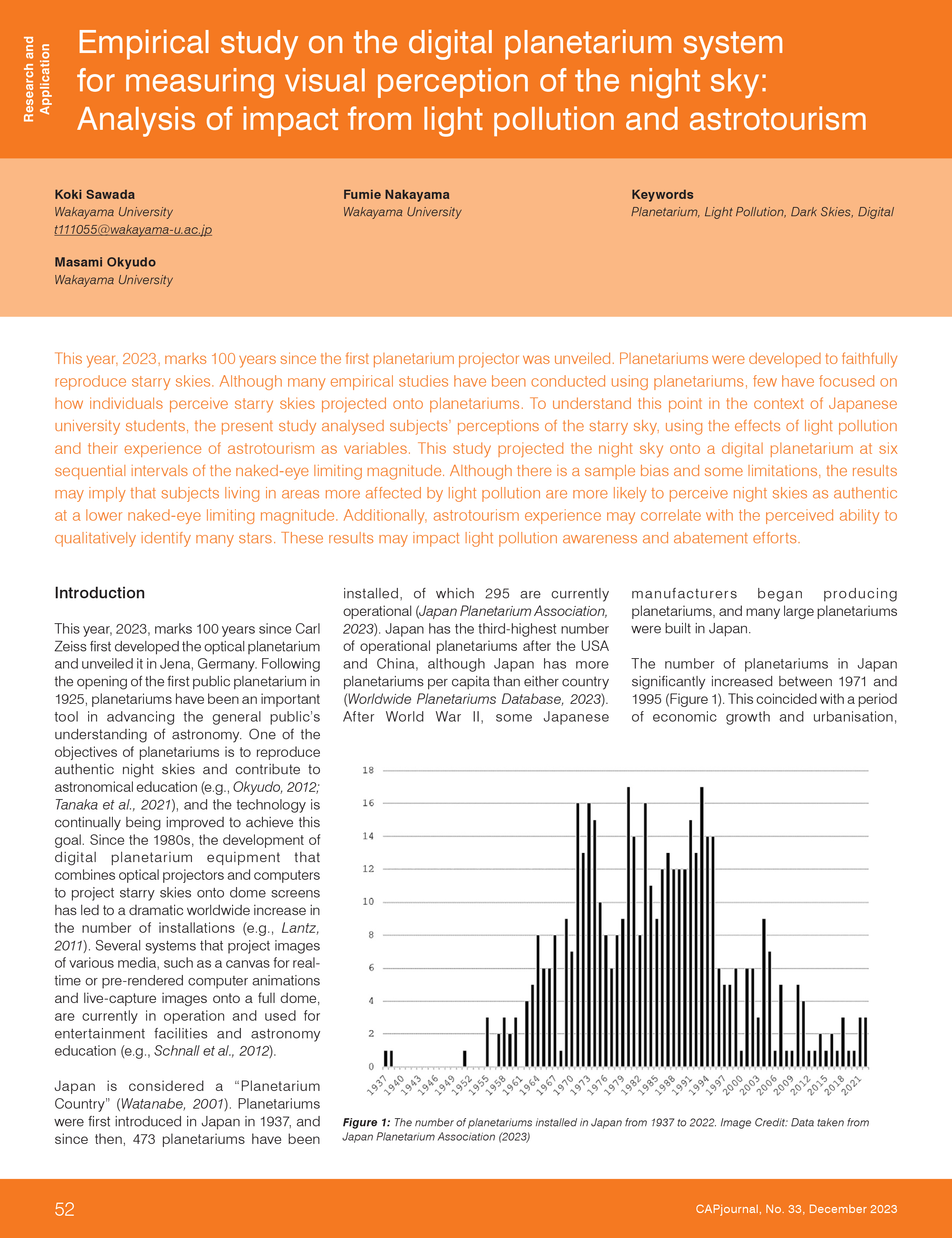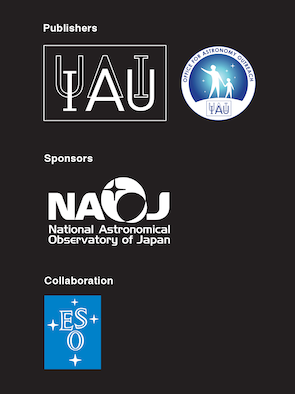|

Download this article
- PDF (1,1 MB)
Back to the Table of Contents
|
Empirical study on the digital planetarium system for measuring visual perception of the night sky: Analysis of impact from light pollution and astrotourism (page 52)
Sawada, K., Nakayama, F., and Okyudo, M.
This year, 2023, marks 100 years since the first planetarium projector was unveiled. Planetariums were developed to faithfully reproduce starry skies. Although many empirical studies have been conducted using planetariums, few have focused on how individuals perceive starry skies projected onto planetariums. To understand this point in the context of Japanese university students, the present study analysed subjects’ perceptions of the starry sky, using the effects of light pollution and their experience of astrotourism as variables. This study projected the night sky onto a digital planetarium at six sequential intervals of the naked-eye limiting magnitude. Although there is a sample bias and some limitations, the results may imply that subjects living in areas more affected by light pollution are more likely to perceive night skies as authentic at a lower naked-eye limiting magnitude. Additionally, astrotourism experience may correlate with the perceived ability to qualitatively identify many stars. These results may impact light pollution awareness and abatement efforts.
Suggested Citation (APA)
Sawada, K., Nakayama, F., and Okyudo, M. (2023). Empirical study on the digital planetarium system for measuring visual perception of the night sky: Analysis of impact from light pollution and astrotourism. Communicating Astronomy with the Public Journal, 33, 52-61. https://www.capjournal.org/issues/33/33_52.pdf
|

